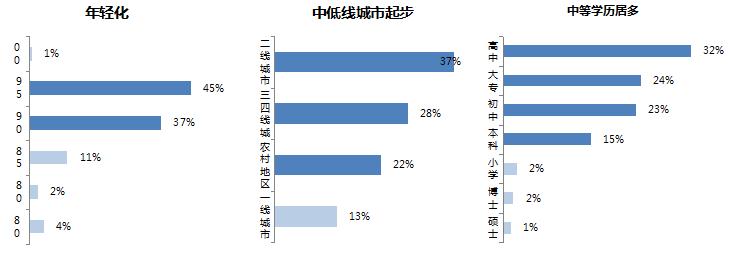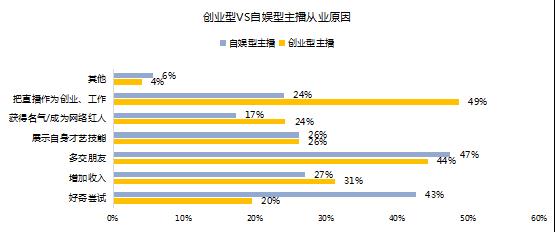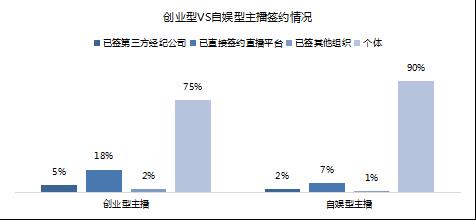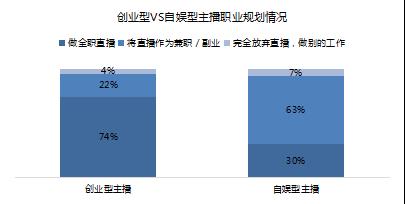2025-02-06 04:03:13|Myriagame |source:minecraft skins
In recent years, online live streaming has shown explosive growth, with hundreds of platforms, over 10 billion, and more than 300 million users. Listed companies and celebrity companies have risen, becoming a feast for industries and capital.
Behind the halo, the online anchor group, as the core asset of the live broadcast platform, has quietly reached the millions of magnitude. With frequent hot events, differentiated public opinion, and strict supervision, it has aroused heated discussion and attention from many parties in the society.Essence
Tencent Research Institute and Longzhu Live Platform conducted a questionnaire survey on more than 4,500 anchors across the country, trying to use data to unveil the veil of the anchor group, and explore the 2017 Internet from multiple dimensions such as career truth, income truth, value truth, platform truth and technical truth.The truth and future of the anchor.

Anchor portrait: "Young grassroots group"
Under the "Hundred Broadcast War", the live broadcast industry's circulating characteristics such as "low threshold, low risk, high return, and high reputation" have attracted more and more people to become anchors.According to public data, the cumulative number of anchors participating in the cumulative number of anchors on several major top anchor platforms such as Yingke, Douyu, YY, and Dragon Ball has exceeded 3.5 million, which is in line with the 2015 information transmission, computer services and software industry towns announced by the National Bureau of Statistics in 2015.The number of employees employed in the unit is equivalent, even more than twice the number of employees employed in urban units in the cultural, sports and entertainment industries.The huge scale of anchor participation has pushed the "anchor" to the forefront.
So, who constitute the current army of anchors? According to the data from this survey, the current anchors show the main characteristics of younger, grassroots and moderate education.In short, the "young grassroots group" is the main group of the current anchor army.
The anchors are young, with 82% of the anchors born in 1990-2000 (18-27 years old).In terms of gender ratio, pan-entertainment anchors show that women dominate, while game live broadcasts show that men dominate.
Grassroots and middle-educated anchors are popular.From the perspective of regional distribution, only 10% of the anchors in first-tier cities, and more than 80% are concentrated in second-tier and below cities and rural areas, of which half are anchors in third- and fourth-tier cities and rural areas.In terms of education, nearly 80% of people with high school, college and junior high school education account for.

This situation is closely related to the characteristics of the live broadcast industry.As one of the typical microcosm of the domestic wave of sharing economy, live broadcast provides this group with a stage to show themselves. As long as you have a skill or your own characteristics, you can get the opportunity to show yourself no matter where you are, get income or even become famous.EssenceCompared with traditional professions, the emerging profession of anchor has reduced the requirements for some hard conditions such as education and region to a certain extent, and the "national live broadcast" trend has arrived.
Career truth—Entertainment and entrepreneurship go to the opposite direction
Although the national live broadcast trend has arrived, there is a clear differentiation within the anchors on issues such as "how to do" and "why do", forming a type of part-time anchor for entertainment and social purposes. We call them self-entertainment anchors.;One category is full-time anchors with the main purpose of entrepreneurship and income increase, and we call them entrepreneurial anchors.
Four major differences between entertainment and entrepreneurial anchors
For these two types of anchors, there are mainly differences in the following four aspects.

First, the difference in work status: full-time vs part-time.
The live broadcast platform does not clearly define the two different anchor work forms, full-time and part-time, but is more determined from the anchor's own cognitive level.
According to the data from this survey, the anchors are still part-time self-entertainment anchors, and full-time entrepreneurial anchors are still in a minority, accounting for about 7:3, and the proportion of full-time anchors is only 20%.Among them, part-time anchors account for the highest proportion, about 39%, while most of the anchors who have worked part-time and now have full-time jobs are freelancers, accounting for about 48%.
Second, the difference in business purpose: entrepreneurship and increase income VS entertainment and social interaction.
According to the data of this survey, nearly half of entrepreneurial anchors regard anchors as entrepreneurship/work (49%), which has become the most important reason for their careers, while making more friends and increasing income account for 44% respectively.31%; and the two main reasons for self-entertainment anchors are making more friends (47%) and curious attempts (43%).
From this we can see that for entrepreneurial anchors, they engage in live broadcasts for the purpose of entrepreneurship and increase income, with clear goals.The situation of self-entertainment anchors is different. It is more due to the needs of entertainment and socialization, and income and work are not the primary factors.

According to this survey data, among anchors whose monthly live broadcast income is above 50,000 yuan, entrepreneurial anchors account for nearly 65%.At the same time, among the anchors whose revenue has increased by more than twice as much as before the live broadcast, entrepreneurial anchors also account for as high as 56%, and their overall performance is relatively impressive.
Third, differences in organizational form: signing contracts vs. signing contracts less.
There are obvious differences in the signing situation of entrepreneurial anchors and self-entertainment anchors.For entrepreneurial anchors, up to 25% of the proportion chooses to achieve professional personal packaging and live content production by signing contracts with live broadcast platforms, third-party economic companies/trade unions or other organizations.Among them, the signing of a live broadcast platform has become the first choice for entrepreneurial anchors, accounting for about 18%.Only 10% of self-entertainment anchors choose to sign contracts, while the remaining 90% take the personalized path in the form of individual live broadcasts.Fourth, career planning differences: full-time vs part-time.

There are also three forks in the future development direction of entrepreneurial anchors and self-entertainment anchors.
First, work as a full-time anchor.It is the first choice for 74% of entrepreneurial anchors, and nearly 30% of self-entertainment anchors are optimistic about the prospects and choose to switch from part-time to full-time.
In addition, entrepreneurial anchors will fully polish their wings for this. In the future, they will communicate with fans (68%), learn live broadcast related knowledge (55%), prepare live broadcast content (35%) and form their own team (23%).Make full preparations in other aspects.
Secondly, the anchor is still used as a side job.Mainly self-entertainment anchors, nearly two-thirds of them choose to continue to be part-time anchors.Among entrepreneurial anchors, 22% of them have retired from full-time to part-time due to competitive pressure and other reasons.
Finally, it is to give up live broadcast.Overall, only 6% of the anchors who choose to give up live broadcasts in the future, and eight of them become self-entertainment anchors.
Regarding the reasons for giving up live broadcasts, more than half of the anchors chose the two reasons for feeling hopeless in fame and unstable income, which are 57% and 55% respectively.In addition, family members do not support it is also an important reason, accounting for about one-third.It can be seen from this that the work of an anchor is not as glamorous as the outside world thinks, and there are also unknown difficulties and challenges behind it.
The emerging online career

Evolution of employment concept
At present, the live broadcast trend has brought changes to the employment concepts of the new generation.The big data report "Post-95s' Job Views!" released by QQ Browser in mid-2016 shows that in the face of "the most difficult employment season in history", as many as 54% of college students regard live broadcasts/Internet celebrities as the emerging ones they most yearn for.Profession.
According to the live broadcast user survey data conducted by Tencent Research Institute and Dragon Ball Live Platform, it is also concluded that at this stage, as many as 53% of users who watch live broadcasts will consider trying to be anchors, especially those born in the 2000s and 2005s.The proportion of users, among which the post-00s is as high as 63%, while the post-05s is 5 percentage points higher, both far exceeding other groups.
If we roughly estimate, according to CNNIC data, the number of users watching live broadcasts in 2016 has reached 344 million, accounting for 47.1% of the total netizens.If estimated based on the 50% anchor conversion ratio, the potential anchor group size is expected to exceed 100 million.Compared with the current millions of anchors, there is still a lot of room for incremental growth. Perhaps the National Live will arrive not far away.
Controversial new employment issues
As the size of the anchor group expands, the disputes and disputes in this emerging online profession have also begun to become prominent.
The first point is that professional ethics are weak.
The "Chinese Law Dictionary - Labor Law Volume" summarizes the five major characteristics of the profession: economic, continuous/stability, sociality, ethics and technicality.It can be seen that the current industry norms for anchors have not yet formed a system and their professional ethics are relatively weak.In the future, as supervision is gradually standardized, this feature is expected to be met.
The second point is the controversy over the new type of employment relationship.
More importantly, since most of the anchors and the organization sign contracts form a working relationship, which is not a labor relationship in the traditional sense, it belongs to the category of emerging "self-employed" workers.Similar to other areas of the sharing economy, there is still controversy over this emerging employment relationship, the platform's responsibilities are vague, and the anchor's social security is still in a gray area.
How to protect the rights and interests of anchors under new employment relations in the future and promote the healthy development of new sharing economy formats such as live broadcasts characterized by new employment relations is still an issue that needs to be explored.

T2 believes that GTA6 violen
2025-02-12 23:28:04
The SIE State of Play launch
2025-02-12 23:28:00
"Midnight South" game durati
2025-02-12 23:27:57
"Pirate 4" sales exceeded 4
2025-02-12 23:27:54
"Assassin's Creed 3: Liberat
2025-02-12 23:27:50
"Assassin's Creed: Shadow" c
2025-02-12 23:27:47
Steam's new weekly sales lis
2025-02-12 23:27:44
"Hundred Days War Chronicle-
2025-02-12 23:27:41
Hideo Kojima will announce n
2025-02-12 23:27:38
"Civilization 7" Chinese are
2025-02-12 23:27:34
Pirate Minecraft Skins
Minecraft Skins
2024-12-10 04:11:27
Pirate Minecraft Skins
Minecraft Skins
2024-12-10 04:11:26
Master Minecraft Skins
Minecraft Skins
2024-12-10 04:11:25
King Minecraft Skins
Minecraft Skins
2024-12-10 04:11:25
Guide Minecraft Skins
Minecraft Skins
2024-12-10 04:11:24
Dark Knight Minecraft Skins
Minecraft Skins
2024-12-10 04:11:23
Sparta Minecraft Skins
Minecraft Skins
2024-12-10 04:11:23
Moncraft Skins of the War
Minecraft Skins
2024-12-10 04:11:22
Red Witch Minecraft Skins
Minecraft Skins
2024-12-10 04:11:22
Golden Cavaliers Minecraft S
Minecraft Skins
2024-12-10 04:11:22